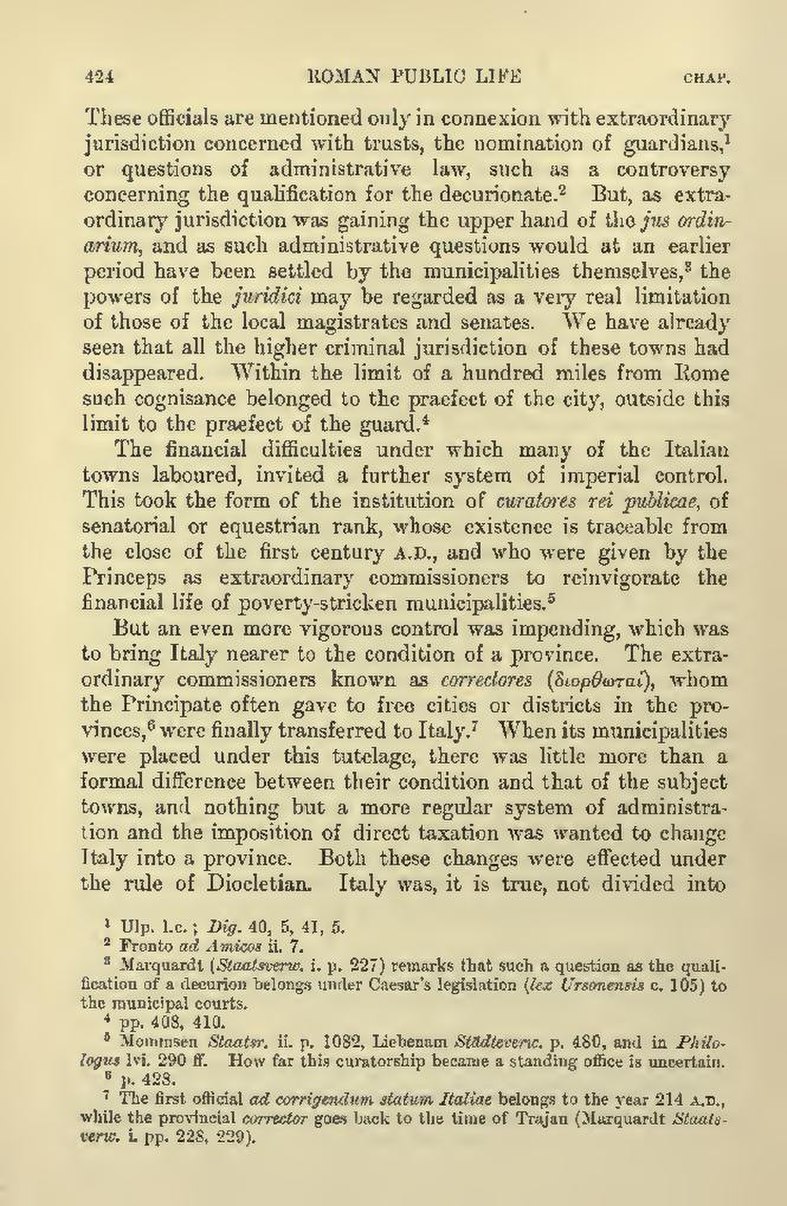These officials are mentioned only in connexion with extraordinary jurisdiction concerned with trusts, the nomination of guardians,[1] or questions of administrative law, such as a controversy concerning the qualification for the decurionate.[2] But, as extraordinary jurisdiction was gaining the upper hand of the jus ordinarium, and as such administrative questions would at an earlier period have been settled by the municipalities themselves,[3] the powers of the juridici may be regarded as a very real limitation of those of the local magistrates and senates. We have already seen that all the higher criminal jurisdiction of these towns had disappeared. Within the limit of a hundred miles from Rome such cognisance belonged to the praefect of the city, outside this limit to the praefect of the guard.[4]
The financial difficulties under which many of the Italian towns laboured, invited a further system of imperial control. This took the form of the institution of curatores rei publicae, of senatorial or equestrian rank, whose existence is traceable from the close of the first century A.D., and who were given by the Princeps as extraordinary commissioners to reinvigorate the financial life of poverty-stricken municipalities.[5]
But an even more vigorous control was impending, which was to bring Italy nearer to the condition of a province. The extraordinary commissioners known as correctores ([Greek: diorthôtai]), whom the Principate often gave to free cities or districts in the provinces,[6] were finally transferred to Italy.[7] When its municipalities were placed under this tutelage, there was little more than a formal difference between their condition and that of the subject towns, and nothing but a more regular system of administration and the imposition of direct taxation was wanted to change Italy into a province. Both these changes were effected under the rule of Diocletian. Italy was, it is true, not divided into
- ↑ Ulp. l.c.; Dig. 40, 5, 41, 5.
- ↑ Fronto ad Amicos ii. 7.
- ↑ Marquardt (Staatsverw. i. p. 227) remarks that such a question as the qualification of a decurion belongs under Caesar's legislation (lex Ursonensis c. 105) to the municipal courts.
- ↑ pp. 408, 410.
- ↑ Mommsen Staatsr. ii. p. 1082, Liebenam Städteverw. p. 480, and in Philologus lvi. 290 ff. How far this curatorship became a standing office is uncertain.
- ↑ p. 428.
- ↑ The first official ad corrigendum statum Italiae belongs to the year 214 A.D., while the provincial corrector goes back to the time of Trajan (Marquardt Staatsverw. i. pp. 228, 229).
